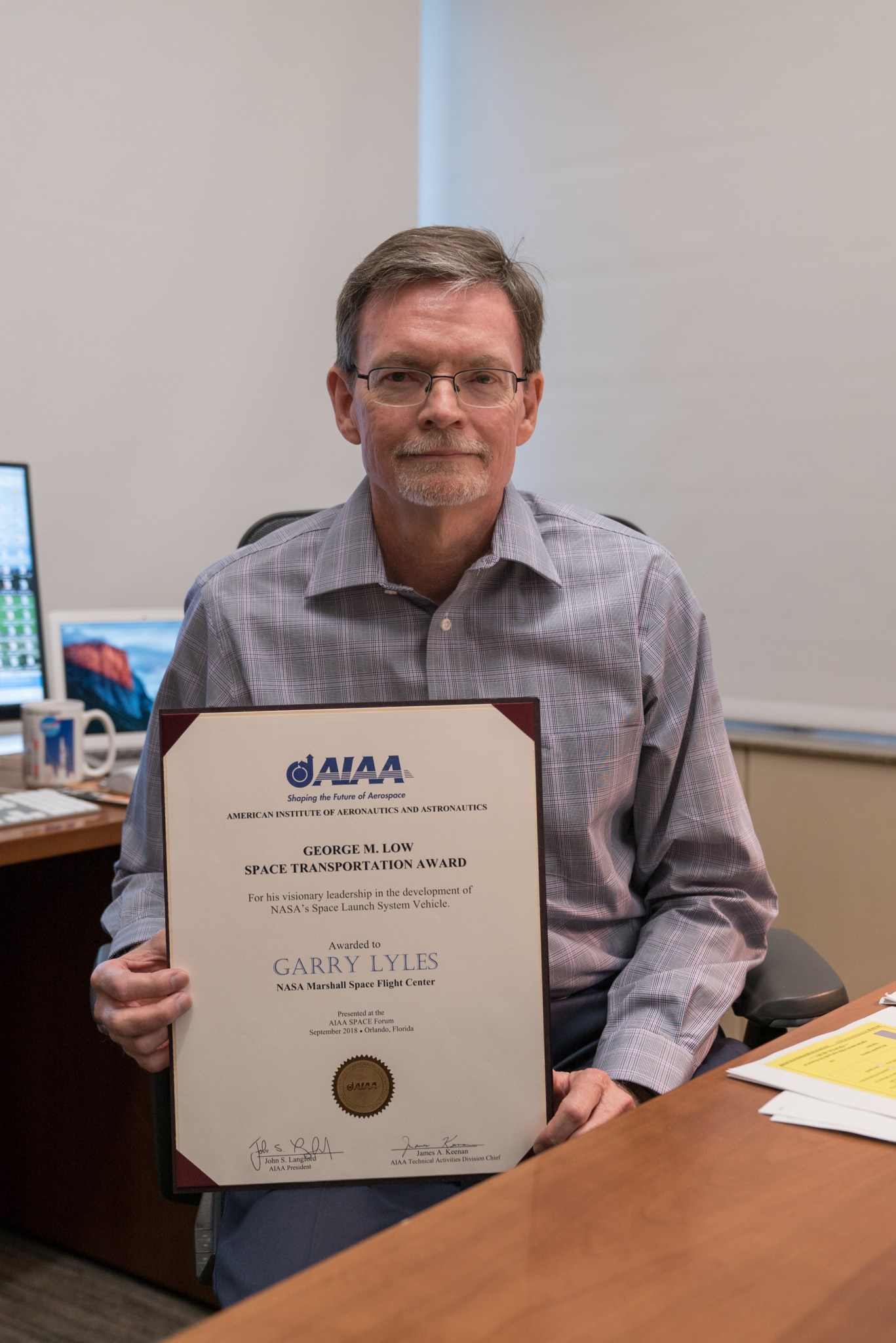SLS Chief Engineer Driven by ‘Challenge’ of Building Rocket
Space Launch System (SLS) Chief Engineer Garry Lyles received the 2018 American Institute of Aeronautics and Astronautics (AIAA) George M. Low Award for Space Transportation. AIAA cited Lyles “visionary leadership” in the development of NASA’s SLS rocket.
“Building the world’s most powerful rocket has been challenging,” Lyles said. “There is tremendous complexity in how all the pieces and parts of the Space Launch System work together. What I’ve found is a lot of what makes the rocket work is not just the physics. It’s the people. I feel like this award is for the whole SLS team.”
Lyles has served as the SLS chief engineer at NASA’s Marshall Space Flight Center in Huntsville, Alabama since the program’s beginning in the fall of 2011, guiding the rocket through both its preliminary and critical design reviews. Now, hardware is being built for the first and second flight.
“It’s an honor to be part of the team that is designing and building a rocket that is powerful enough to take humans beyond the Moon, farther than they’ve ever traveled in deep space,” Lyles said.
Lyles first became fascinated with human spaceflight, during the Saturn V days. As a 10-year-old boy, he came to Marshall with his dad and uncle for an open house and learned about American’s first landings on the Moon.
That day, as S1 stage engines ignited every hour in the test stand, something ignited in that little boy, as well — a dream to one day work “at one of the coolest places” he’d ever been. Today, he’s living that dream.
“It’s funny – at that open house all those years ago, I didn’t think much about being an engineer, but Marshall sure did impress me as an exciting place to work,” Lyles recalls. “Later on, when I was in high school, I had a couple of friends who wanted to be engineers. The only thing we knew then was engineers designed things, and that’s what we wanted to do. We wanted to create things.”
“We all decided to go to engineering school. I took one of those career aptitude tests, and according to it, the probability of me making passing grades in engineering was relatively low. But that just made me want it more. I said, ‘You know what? I’ll show you.’”
And “show” he has, graduating from the University of Alabama with a degree in mechanical engineering and working for NASA for 42-years.
“I was lucky enough to start working for NASA when a lot of the Saturn vehicle designers were still here,” Lyles remembers. “I was in a very unique situation where I was the one of the few young guys around, and we were able to learn from very experienced engineers who had been on the front end of the Saturn design.”
“The other good part of my career is that I came in near the front end of the Space Shuttle Development Program,” he added. “I had one particular engineer who was my primary mentor — Tom Winstead — a very, very smart engineer. In working with him for eight years, I not only learned how to be a better engineer, but I also learned how to communicate much better. I learned a lot of patience in communication, which helps me tremendously in my current position.”
As chief engineer, Lyles integrates the different elements of the SLS into a design that will fly successfully and safely beyond low Earth orbit. This includes the boosters, engines, core stage and Interim Cryogenic Propulsion Stage (ICPS), which have been or are currently being built for Exploration Mission-1 (EM-1). During EM-1, SLS and Orion will demonstrate the critical backbone capabilities that will carry humans to the Moon and farther into space than ever before on a variety of missions with increasing complexity.
Lyles is also guiding the design and development of even more powerful configurations of SLS that will provide unprecedented power and volume to carry the large pieces of hardware needed to build the Gateway and other long-term infrastructure at the Moon and, later, for human missions to Mars.
“As far as my career goes, I’ve been so fortunate.” Lyles said. “I’ve always wanted to be in the middle of the biggest project at the center, and then carry it all the way through flight. When we see SLS loft astronauts to the Moon, that will probably be my proudest moment.”
For more information on SLS, visit:


























